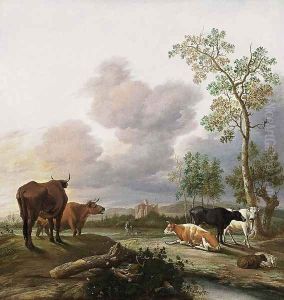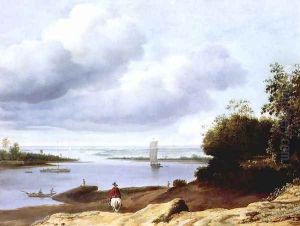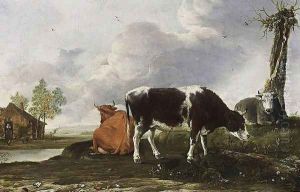Anthonie van BORSSUM Paintings
Anthonie van Borssum, a Dutch Golden Age artist, was born in 1630 in Amsterdam, Netherlands. Historically, he has been less recognized than some of his contemporaries, but recent scholarship has begun to give him more attention for his contributions to Dutch landscape and still life painting.
Van Borssum showed a keen interest in the natural world, and this was reflected in his work. He was particularly known for his detailed landscapes, which often featured a wide view, with small figures to emphasize the vastness of the environment. His works display a sensitive understanding of light and atmosphere, which adds to the serene and often idyllic quality of his landscapes.
Although not much is documented about his life, it is known that he was a pupil of Wijnants. His style was also influenced by artists such as Rembrandt and Jan van Goyen, which can be seen in his use of color and the atmospheric perspective in his paintings. Van Borssum’s works include not only landscapes but also drawings and watercolors of plants, animals, and insects, which were characteristic of the detailed observation typical of Dutch Golden Age art.
Despite his talents, van Borssum did not achieve significant fame during his lifetime. He passed away in 1677 in Amsterdam. Today, his works are held in various collections around the world, appreciated for their peacefulness and technical skill. They serve as a testament to the rich artistic environment of the 17th-century Netherlands and contribute to our understanding of the period’s landscape genre.


